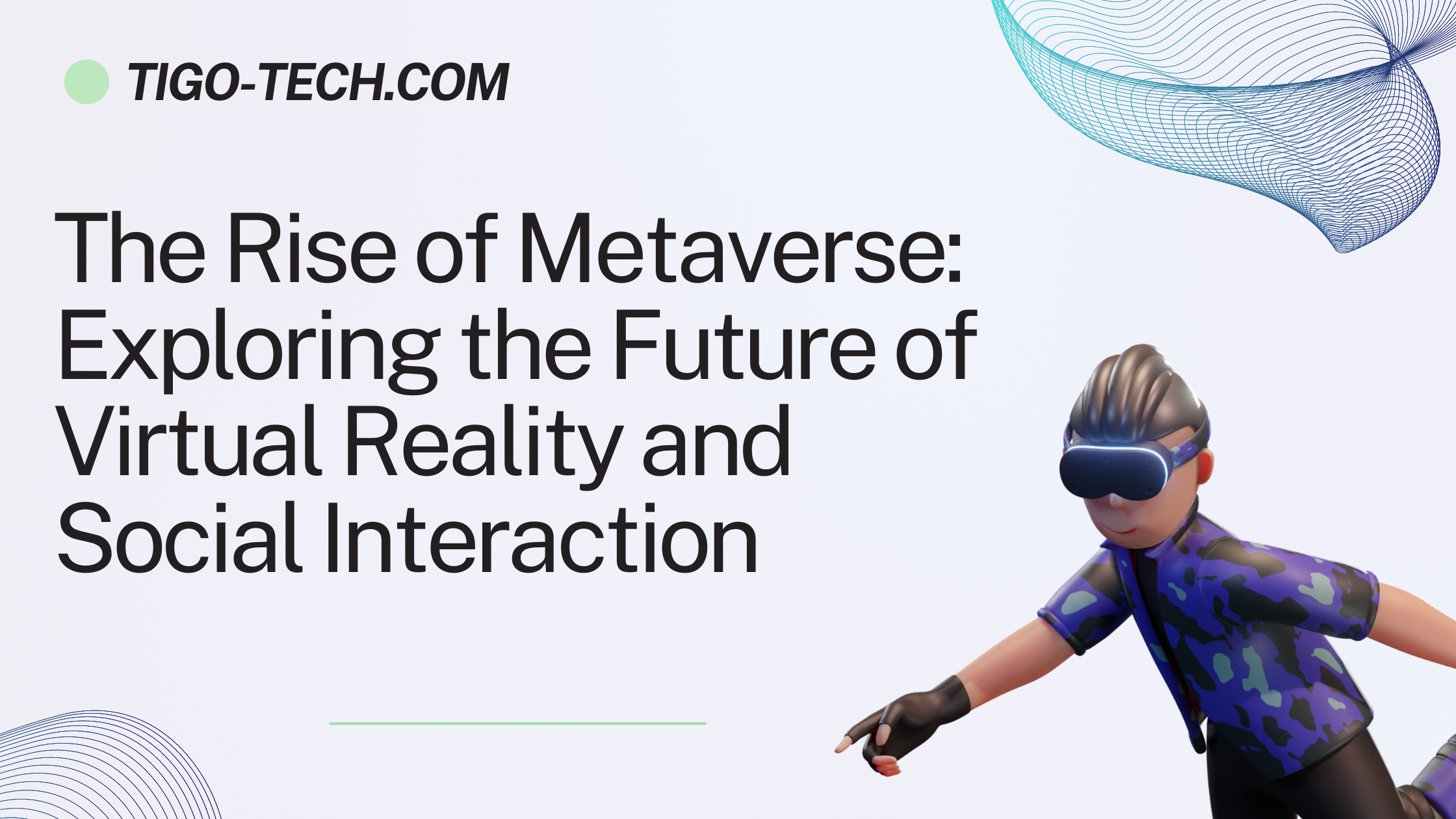Introduction:
The concept of the metaverse, a collective virtual shared space, is gaining momentum as advancements in technology pave the way for immersive virtual experiences. From virtual reality (VR) environments to augmented reality (AR) overlays, the metaverse represents a new frontier for social interaction, entertainment, and commerce. In this blog post, we’ll delve into the rise of the metaverse and explore its potential to revolutionize how we connect, communicate, and collaborate in the digital age.
- Defining the Metaverse:
The metaverse refers to a collective virtual space created by the convergence of digital technologies, including VR, AR, artificial intelligence (AI), and blockchain. It is envisioned as a persistent, immersive, and interconnected virtual world where users can interact with each other and digital objects in real-time. The metaverse transcends traditional boundaries, offering limitless possibilities for creativity, exploration, and social engagement.
- Immersive Virtual Environments:
VR technologies enable users to immerse themselves in virtual environments, complete with lifelike graphics, 3D audio, and interactive elements. From virtual worlds and simulated landscapes to immersive gaming experiences and virtual events, VR creates a sense of presence and immersion that transcends physical limitations, allowing users to explore new realities and engage with others in unprecedented ways.
- Social Interaction and Collaboration:
The metaverse fosters social interaction and collaboration on a global scale, enabling users to connect, communicate, and collaborate with others regardless of geographical distance. Virtual social spaces, such as virtual chatrooms, virtual conferences, and virtual hangout spots, facilitate real-time communication and interaction, creating opportunities for shared experiences and meaningful connections.
- Digital Economy and Commerce:
In the metaverse, virtual goods, services, and experiences are bought, sold, and traded within digital economies powered by blockchain technology. Virtual marketplaces, virtual storefronts, and digital asset exchanges enable users to monetize their creations, trade virtual assets, and participate in virtual economies. From virtual real estate and digital art to virtual fashion and in-game items, the metaverse offers new opportunities for entrepreneurship and commerce.
- Entertainment and Media:
The metaverse is poised to disrupt the entertainment industry, offering immersive storytelling experiences, interactive content, and live events in virtual environments. From virtual concerts and film screenings to immersive theater productions and interactive gaming experiences, the metaverse blurs the lines between reality and fantasy, providing new avenues for entertainment, creativity, and expression.
- Challenges and Considerations:
While the metaverse holds immense potential, it also poses challenges related to privacy, security, identity, and digital rights. As users increasingly spend time in virtual environments, issues such as data privacy, cybersecurity, digital surveillance, and online harassment must be addressed to ensure a safe and inclusive metaverse. Additionally, questions about ownership, governance, and interoperability in virtual worlds raise important considerations for the future development of the metaverse.
Conclusion:
In conclusion, the rise of the metaverse represents a paradigm shift in how we perceive and interact with digital technologies. As virtual reality, augmented reality, and other immersive technologies continue to evolve, the metaverse holds the promise of transforming how we connect, communicate, and collaborate in the digital age. By exploring the potential of the metaverse and addressing its challenges, we can unlock new opportunities for creativity, innovation, and social interaction in virtual worlds.
